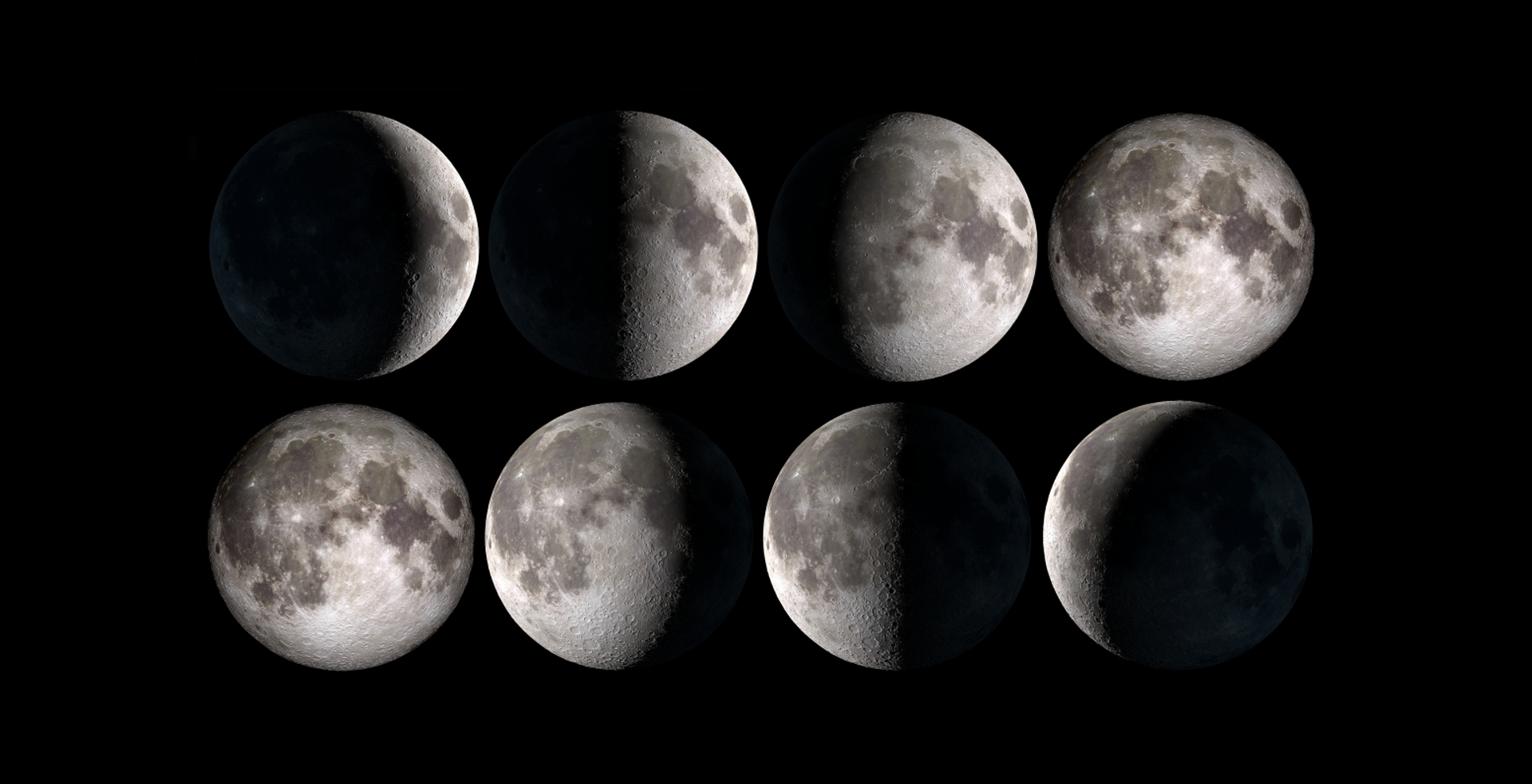SECTION 3
You are advised to spend 20 minutes on Questions 28-40, which are based on the reading passage below.

Phases of the Moon
Traveling a distance of approximately 382,400 kilometers, the moon takes just over twenty-nine days to complete its orbit around the Earth. During this lunar cycle, many different phases of the moon are visible from Earth, even though the moon itself never changes shape. The cyclic period of the moon is determined by the extent to which the sun illuminates the moon on the side that is facing Earth. Just like Earth, the moon is sphere shaped, and thus always half illuminated by the sun. However, because the moon and the Earth are in synchronous rotation, we can see only the near side of the moon. The side we do not see is called the far side, or the dark side, a term that is often misunderstood. The dark side refers to the mysteriousness of this unseen side, not the amount of light it receives. Both the near and the far sides of the moon receive approximately the same amount of sunlight. Though we see a slightly different moon from Earth each day, its repetitive cycle is both predictable and functional.
There are eight phases of the moon, each with a unique name that signifies how much of the moon is visible from Earth. In the early phases, the moon is said to be waxing, or gradually getting larger. The first phase is called new moon. In this phase, the moon is lined up between the Earth and the sun. The illuminated side of the moon is facing the sun, not the Earth, so from Earth, there appears to be no moon at all. As the moon begins to move slowly eastward away from the sun, it becomes slightly more visible.
After new moon, the waxing crescent phase begins. During this phase, the moon appears to be less than half illuminated. First quarter occurs when one-half of the moon is visible. It is called first quarter, not because of its size, but because it represents the end of the first quarter of the moon’s cycle. The next phase is called waxing gibbous and represents a moon that is larger than half a sphere, but not quite a whole. This phase is followed by full moon, which occurs when the moon’s illuminated side is directly facing Earth.
As the moon begins to get smaller again, it is said to be waning. The phases in the second half of the cycle appear the same as the first, except that the opposite half of the near side of the moon is illuminated, thus the moon appears to be shrinking rather than growing. Waning gibbous is followed by last quarter, when one-half of the moon is visible, and finally waning crescent. In the Northern Hemisphere, when the moon is waxing, the light of the moon increases from right to left. The opposite occurs in the Southern Hemisphere.
Like the sun, the moon is an accurate tool for measuring time. A complete cycle of the moon is called a lunation. A full cycle of the moon typically lasts just under one calendar month, therefore, the phase of the moon that starts a month usually repeats just before the month is through. When two full moons occur in one calendar month the second one is called a blue moon. This phenomenon occurs about once every 2.7 years. Within one cycle, the moon’s “age” is calculated from the last day of the new moon. For example, the moon is approximately fifteen days old during the full moon phase.
The moon can also be used to calculate the time of day. Just like the sun, the moon rises and sets each day and is visible on the Earth’s horizon. At new moon, the moon and sun rise and set at almost the same time. As the moon begins to wax, or move farther in its orbit, it rises approximately one hour later each day. By full moon, the moon rises at about the same time the sun sets and sets when the sun rises. Therefore, the moon is out in the daytime as often as it is at night even though it is not always as easy to see in the daylight. The Islamic calendar is based on the phases of the moon. The beginning of each new month in the Islamic calendar begins when the waxing crescent first appears in the night sky.
The primary phases of the moon, which include new moon, first quarter, full moon, and last quarter are published in almanacs for each month. The phases can also be found on many calendars in the Western world. Despite the world’s fascination with the moon, its phases are not entirely unique. The planets Venus and Mercury have similar phases; however, unlike the moon, these planets can never be on the opposite side of the Earth from the sun. To see the equivalent of the “full moon” phase of these planets, we would need to have the capacity to see through the sun.